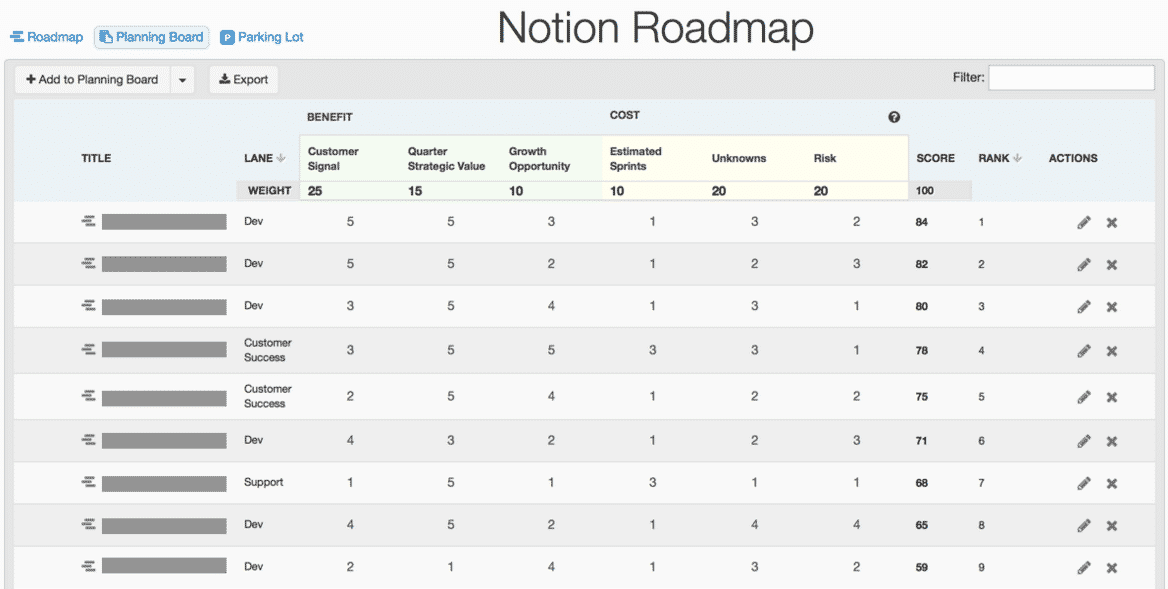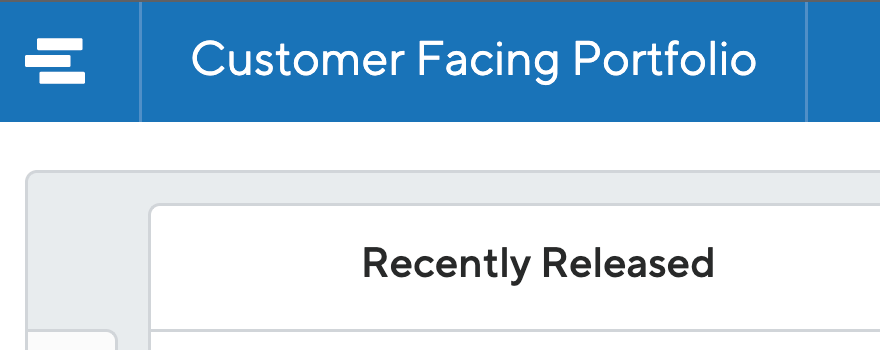I still cringe when I think back to the first roadmap I put together.
Like most of us who find ourselves in product management, at the time I didn’t even realize I was doing “product management.” I was the lead of a UX team and saw a bottleneck between our work is designed and being implemented by the development team. So I sat down and wrote out the requirements and the order in which I thought the work should be done.
As you might expect, it was a terrible roadmap. Cobbled together in a spreadsheet with links to a prototype serving as the only design specs, there was little visibility into what we were building, let alone why. I can’t believe my teammates put up with it.
Thankfully, much has changed since then.
For starters, I’m officially running product at my new company, Notion. More importantly, we have a process in place for team-wide alignment on our roadmap thanks to increased visibility and understanding of why we are building what we are building.
We accomplished this by gathering what we call Little Data to tell the story of how we align and adjust our roadmap.
Aligning the Roadmap
ProductPlan’s Planning Board feature is a great way to align your team around upcoming features. Thanks to their built in Weighted Scoring Model, it’s easy for the entire team to rate features as they relate to your goals as a company.

At Notion, our benefits are designated by Customer Signal, Quarter Strategic Value, and Growth Opportunity. In other words, we rate a feature based on how high the demand is, its alignment with our growth goals, and how marketable it is.
Our costs are broken down by Estimated Sprints, Unknowns, and Risk. These help us identify how long a feature will take to build, how much discovery still needs to happen, and whether or not the feature jeopardizes other elements of the app or user experience.
After rating and reviewing these as a team, we are left with a prioritized list for the quarter based on the final score of each feature. That doesn’t mean we always build in that exact order, but we now have a baseline to measure any changes to the roadmap against. If anyone on the team wonders why we are building something, we can point back to the list and (hopefully) be able to explain our decision process. It’s a massive improvement from the laundry list of features I used to keep in Excel and has really increased team buy-in on what we are building.
To learn how to build a data-driven roadmap of your own, watch ProductPlan’s webinar:
Adjusting the Roadmap
The prioritized list from ProductPlan serves another purpose. The synthesis of the costs and benefits correlates to the perceived value we are delivering to our customers. The higher the rank, the higher the value. This is critical data to reference as we measure our success goals since the other half of owning a roadmap is being able to make adjustments to it.

We gather this data in Notion itself. As a tool, Notion brings together team, product, and performance data to help you make smarter, faster decisions. This means as a team, we are able to dogfood our own product to improve our own product.

At the end of each sprint, we poll the team on a few team health metrics, one of which is how much value we think we are delivering to our customers.
![]()
We can compare that value alongside other metrics we track in Notion like conversion rates, growth rates, and user activity around specific features. A dip in delivered value may result in undesirable drops across the board. We’re also in frequent contact with our customers to get a better sense of what is and isn’t working for them.
If adjustments need to be made, we use this data to support our decisions. We can go back to the Planning Board and identify where we may have missed in our initial estimations, make the necessary adjustments, and document it so we can avoid the same mistake again in the future.
Getting Started
If you are interested in approaching your roadmap this way, my best piece of advice is this:
Start small and be flexible. There is no secret set of metrics that will apply to every team or company. Plus, your needs and goals as a company will most likely change over time. Align your team by creating visibility into and understanding of your roadmap goals. Once this exists, the metrics you need to track should be easier to identify.
For more tips on how to get started, you may find our School of Little Data helpful. Or feel free to reach out, we’re always happy to chat.

About the Guest Author:
Kevin Steigerwald has been designing, researching, marketing, planning, and building products big and small for over 10 years. He is currently the co-founder and CPO of Notion in Portland, Oregon.



